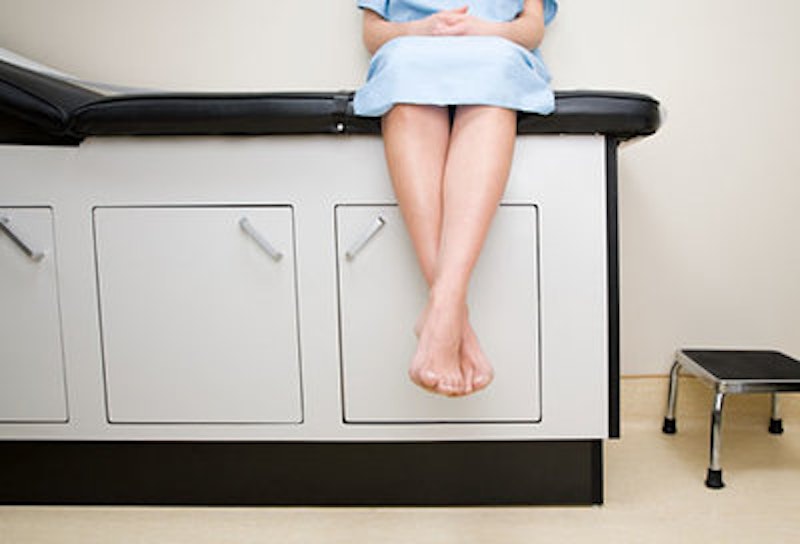The 40s are a weird age decade. You’re over the youth and bullshit and caring-what-people-think of your 20s and 30s, but not really ready to dive into your 50s because people throw around the phrase “half century” and suddenly museum statues come to mind. Last week, on what happened to be the day before my birthday, I was at the dermatologist for a mole thing that had appeared on my arm. My grandmother had skin cancer, so I get checkups at the dermatologist once every year or so, where I’m surrounded by advertisements for laser therapy and “skin rejuvenation injections” and celebrity magazines. I shrink into the waiting room chair, fantasizing about tasteful cosmetic procedures to schedule if my dad ever wins the lottery.
After a solid hour and watching two old men go back to be seen even though their appointment times were after mine, I’m brought back to a room. The doctor enters without apology, but I like her and the office is very busy, so I don’t say anything. What’s the point? My chart is on the table behind her but she hasn’t opened it, and the doctor simply asks how old I am. I stare at her.
“Um,” I begin, embarrassed not to know the number automatically. “Well, my birthday is tomorrow, and I was born in 1969 so I’m pushing 50, I guess, but…” I quickly try to do the subtraction of 1969 from 2015 in my head, and fail as I always have at math. She laughs. “It’s okay. You can’t remember how old you are, exactly.”
“I guess I’m take-out-your-iPhone-calculator-and-do-math years old,” I tell her. I’m not in a huge rush to start saying “I’m nearly 50” to anyone other than a doctor, and anyway isn’t it a no-no to ask a woman’s age in the rest of the world?
She examines the icky brown spot on my arm. “So there’s some good news and some bad news,” she says. “The good news is that the spot is not suspicious. The bad news is that you seem to have your first age spot—completely harmless, just part of aging.” I blink. “So you’re not going to laser it off and send it to the lab?” I ask, in reference to a number of moles she’s removed over the past few years.
The doctor smiles patiently. “We don’t send age spots to the lab.”
“You just diagnosed me with aging,” I note; it had taken a moment to sink in.
“You look great for your age,” she contributes, with a smile. For my age. She offers to remove the spot if it bothers me, then goes about checking me over for other suspicious areas, telling the nurse she would need to remove one from my back. She asks me if the spot has changed. Since I can’t see the spot on my back, I hadn’t known it was there to know if it changed.
She talks, of course, about sunscreen and how it’s difficult to apply to that area, making it more vulnerable to sun damage that can result in skin cancer. I’m really good about sunscreen on my face and arms and highly-burnable cleavage, but I don’t tell her I’m constantly on a beach searching for sea glass and exposing my back. She tells me to get some back-scratcher lotion-applier thingy. I agree.
She puts an anesthesia needle into my back that hurts like hell, removes a mole to send to the lab, and I spend two days not being able to sit back in the car or lie on my back. Trying to put my t-shirt back on, I knock off the bandage and manage to get blood everywhere. I have a feeling this getting older thing is going to suck, but I ultimately decide to leave the stupid age spot where it is. Who gives a rat’s ass anyway?
My dad helpfully placed a birthday greeting on my Facebook page the next day that reads “Only four more years until your AARP membership!”
—Follow Mary McCarthy on Twitter @marymac.

